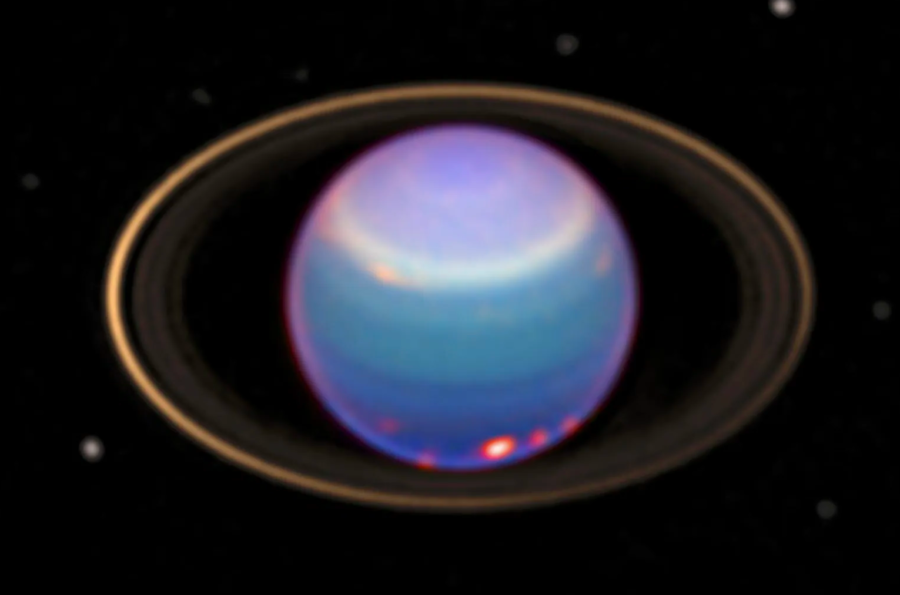Scientists Are Diving Into Uranus

While Mars, Saturn, and Jupiter have been scrutinized by the probes and rovers of scientists, the distant ice giants Uranus and Neptune have remained elusive. Limited data collected during Voyager 2’s fleeting visit in the 1980s has only scratched the surface of these outer planets. Now, a team of international scientists is planning to change that by simulating the atmospheric conditions of Uranus.
According to Science Alert, the endeavor, led by researchers from the UK, the European Space Agency (ESA), and Germany, involves creating a subscale entry probe similar to NASA’s Galileo mission to Jupiter. The primary goal is to study the atmospheres of Uranus and Neptune from within, providing a detailed understanding of their compositions, pressures, and temperatures.

However, designing a probe that can withstand the extreme conditions of Uranus is difficult. “The challenge is that any probe would be subject to high pressures and temperatures, and therefore would require a high-performance thermal protection system to endure its atmospheric entry for a useful amount of time,” aerothermodynamics engineer Louis Walpot of the European Space Agency said.
To address these challenges, scientists used two cutting-edge facilities – the T6 Stalker Tunnel at Oxford University in the UK and the plasma wind tunnels of the University of Stuttgart’s High Enthalpy Flow Diagnostics Group in Germany. These facilities allowed researchers to create atmospheric analogs using gas mixtures similar to those found on Uranus and Neptune.
The T6 Stalker Tunnel, a hypersonic plasma facility, was crucial in measuring convection and radiative heat flux. “The tunnel itself operates with a free-piston driver, which can be coupled to several different components downstream to become a shock tube, reflected shock tunnel, or an expansion tube,” Walpot explained. “This adaptability allows for a wide range of testing from subscale modeling testing to the exploration of fundamental high-speed flow processes.”

Interestingly, the plasma tunnel at the University of Stuttgart is the only facility in the world capable of creating the conditions needed to study the effects of ablation and pyrolysis on spacecraft shielding. The Uranus simulations involved subjecting the subscale entry probe to speeds of up to 19 kilometers per second, replicating the conditions it would experience during atmospheric entry.
The probe also measured convective heat flux across its surface, offering crucial data for the development of sensors that will measure the ice giants’ atmospheres during future missions. The simulations mark a significant step forward in preparing for future missions to Uranus and Neptune. While some challenges remain, the scientific community is poised to overcome them.
Uranus is the seventh planet from the Sun in our solar system. Classified as an ice giant, the planet is unique because it rotates on its side, with an axial tilt of about 98 degrees. This extreme tilt gives Uranus its distinct appearance and causes it to have extreme seasonal variations. Information about the planet comes from telescopic observations and the Voyager 2 spacecraft, which conducted a flyby in 1986.
Voyager 2 provided valuable data about Uranus, including details about its atmosphere, magnetic field, and its system of rings and moons. However, the brief flyby limited the amount of data that could be collected compared to more recent missions to other planets, such as the Cassini mission to Saturn or the Juno mission to Jupiter.
There are several reasons why missions to Uranus have been challenging. Besides the 1.8 billion miles (2.9 billion kilometers) distance, exploring outer planets is expensive, and space agencies often have limited budgets. Moreover, a dedicated mission would likely require a long operational lifespan to gather meaningful data.












